Doing up your dream house: Paint Expert
With the recent revival of interest in historical colours, owners are keen to redecorate to some degree of authenticity, but the array of traditional ranges is bewildering
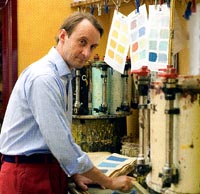

For many houses, painted decoration is the dominant element of the interior. Paint can survive inside for centuries, although most colour schemes have changed with fashion (external paintwork exposed to the elements generally has a life of only about 10 years). With the recent revival of interest in historical colours, many owners are keen to redecorate to some degree of authenticity, but the array of 'traditional' paint ranges on the market can be bewildering, and much of the information and advice on offer is misleading. The paint expert Patrick Baty offers sound advice on paints and finishes, and has dispelled many myths about historical paint and colours. A great-grandson of the artist/colourists Stanislawa de Karlowska and Robert Bevan, he also provides a consultancy on historical decoration, gives technical guidance and runs a colour-matching service from his London shop, Papers and Paints. Founded by his father in 1960, the shop was granted a Royal Warrant earlier this year. It sells a huge range of paint colours, many of which are traditional ones matched with modern materials. 'We also carry out colour surveys using a spectrophotometer to "measure" existing paint colours, so that they can be matched seamlessly when elements of a building are repainted,' he says, citing recent work on John Fowler's 1970s scheme in the Great Hall at Syon Park and a number of London clubs as examples. 'We currently have hundreds of thousands of colours on our database.' He is often asked to reproduce obsolete colours, and has developed his own ranges, such as Traditional Colours, partly based on a set of 1807 hand-painted colour cards, and Historical Colours, reproducing colours found in applied arts such as porcelain and tapestry. He has also devised palettes for Dulux and English Heritage. As a leading consultant on painted decoration, Mr Baty has been involved with an impressive range of historic buildings, from palaces and cathedrals to 1960s housing estates. His expertise in every aspect of decorative colour combines forensic analysis with research based knowledge of the methods and materials of housepainters, the development of paint and pigments and the history of architecture and decorative taste. 'When dealing with the redecoration of a historic building, there are three principal approaches that might be considered,' he says. 'The most labour intensive is the analytical approach, whereby we investigate the number, sequence, date and composition of the paint layers in a scientific process involving microscopic and chemical techniques, in order to determine how a room once looked.' Mr Baty emphasises that his job is to make an accurate historical record, from which informed decisions can be made. 'Unless a building is of outstanding significance and being presented to the public, it is not usually relevant to carry out an archaeologically exact recreation.' Generally more appropriate in a domestic context is the less academic hypothetical approach, on which Mr Baty also gives guidance. Here, an appropriate decorative scheme is devised, based on historical and practical information acquired through analysis of other similar buildings. 'This more flexible approach allows for a wider palette of colours and finishes to be used, introducing an element of subjective taste.' The third, free way 'requires no specialist knowledge and can be carried out by most interior designers'. Many owners opt for a combination of the latter two. 'It's not always necessary to be tied to the past; what's important is to obtain accurate information and to be honest about the approach. The key thing is not to claim that a room has been restored when it has only been decorated.' Patrick Baty, Papers and Paints 020 7352 8626; www.papers-paints.co.uk TOP TIPS
Be clear about the aim of the projectWorking with the limited palette of colours available in a particular period reduces the risk of going wrongBe wary of paint products and colours labelled as Traditional or Historical. Always seek more information about their origins Expert directory Colin Mitchell-Rose, Edinburgh: 0131 332 2755 Richard Ireland, London: 020 8568 5978 Lisa Oestreicher, Tisbury, Wiltshire: 01747 871717; www.historicpaint.com
Sign up for the Country Life Newsletter
Exquisite houses, the beauty of Nature, and how to get the most from your life, straight to your inbox.
Country Life is unlike any other magazine: the only glossy weekly on the newsstand and the only magazine that has been guest-edited by HRH The King not once, but twice. It is a celebration of modern rural life and all its diverse joys and pleasures — that was first published in Queen Victoria's Diamond Jubilee year. Our eclectic mixture of witty and informative content — from the most up-to-date property news and commentary and a coveted glimpse inside some of the UK's best houses and gardens, to gardening, the arts and interior design, written by experts in their field — still cannot be found in print or online, anywhere else.
-
 380 acres and 90 bedrooms on the £25m private island being sold by one of Britain's top music producers
380 acres and 90 bedrooms on the £25m private island being sold by one of Britain's top music producersStormzy, Rihanna and the Rolling Stones are just a part of the story at Osea Island, a dot on the map in the seas off Essex.
By Lotte Brundle Published
-
 'A delicious chance to step back in time and bask in the best of Britain': An insider's guide to The Season
'A delicious chance to step back in time and bask in the best of Britain': An insider's guide to The SeasonHere's how to navigate this summer's top events in style, from those who know best.
By Madeleine Silver Published
-
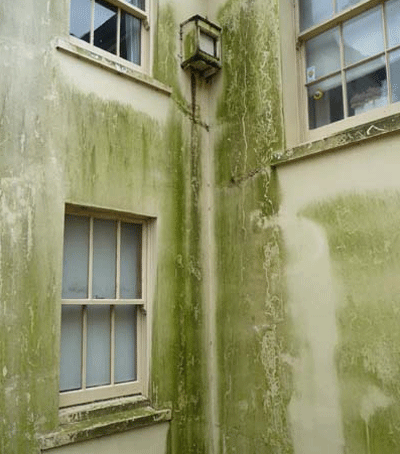 How to prepare your house for winter
How to prepare your house for winterAs winter approaches, experts advise that preventative measures are crucial for our houses to weather hard winters
By Country Life Published
-
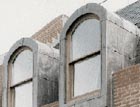 Ten house tips for the winter
Ten house tips for the winterNow is the time to put your house in ship-shape for the winter months ahead. Chartered surveyor Tom Grillo shares his ten top tips
By Country Life Published
-
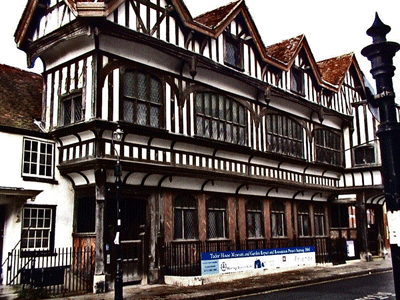 Choosing an interior designer
Choosing an interior designerFinding the right skilled interior designer for your period property requires some dedication; in particular you need to make sure you share the same vision
By Country Life Published
-
Maintenance tips for Victorian houses
There are a number of aspects to look out for when viewing or indeed owning a Victorian house
By Country Life Published
-
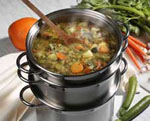 Best cooking pans
Best cooking pansMrs Danvers suggests the best makes of pots and cooking pans to hunt down when shopping for a special friend's wedding present
By Country Life Published
-
How to save old floorboards
Lots of care and elbow grease can help old floorboards gleam again
By Country Life Published
-
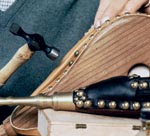 Buying bellows
Buying bellowsMrs Danvers recommends where to find a new or antique pair of bellows
By Country Life Published
-
 Removing chocolate stains
Removing chocolate stainsMrs Danvers tackles readers' household queries: this week's are chocolate stains on a linen suit and screen doors
By Country Life Published
